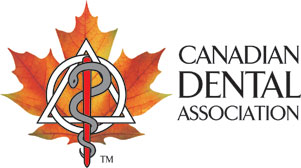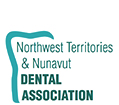Listed below are commonly asked questions about Bisphenol A (BPA). Select a question to view the Canadian Dental Association's (CDA) response.
1. My daughter had dental sealants placed 3 years ago. Should we be concerned about side effects from the material used?
No. The amount of Bisphenol A that comes from dental sealants has always been extremely small and limited to a few specific products. As well, this very minimal exposure occurs within the first few hours/days after placement, and then quickly reduces to virtually nothing.
2. But I heard that Health Canada has banned all products with Bisphenol A and declared it toxic. So doesn’t that mean it’s dangerous?
The government’s report and recommendations places restrictions on the use of Bisphenol A only in products for infants – such as baby bottles and infant formula cans. This is because the amount of exposure from these sources is relatively close to safety margins, and because of increased sensitivity in infants. No restrictions are planned for dental materials because they are well within safety margins.
3. How can there be more exposure from baby bottles than from a substance that is in my child’s mouth?
The exposure from baby bottles is higher because formula is often mixed with boiling water. This very high level of heat causes more Bisphenol A to leach out. This type of heat exposure does not occur in the mouth. Once the dental material is placed and hardened, it becomes very stable.
4. Should my child get new sealants or resin fillings? I have heard that they are not safe.
Sealants are excellent protection against cavities. In addition to brushing, flossing and fluoride, they protect teeth from the need for future restorations. As well, most products do not release BPA.
5. Will my dentist warn me – or ask me to sign a consent form – before using a material with Bisphenol A?
Dentists discuss the pros and cons of each material with patients prior to treatment. Health Canada’s report does not place special restrictions or requirements on dental materials containing Bisphenol A because they are well within safety limits. As a result, special consent is not required.
6. What other materials are available? Which one is the safest?
A variety of materials are available for restorations, including dental amalgam, stainless steel, gold, porcelain and resin. Most sealants and resins contain no (or very little) Bisphenol A and it does not release in the application. All materials have various pros and cons. You and your dentist should decide together which material is best for you or your child.
7. Why can’t dentists come up with a material that is completely safe?
Dental materials are developed by dental manufacturers and carefully governed by the rules and regulations of Health Canada. These materials, including resins and sealants, are all very low risk.
Unfortunately, no material can completely replace real tooth structure. This is why prevention is so important. With proper care from you and your dentist – it is achievable to maintain oral health throughout a lifetime.
Whenever an intervention is required, it is important to have a variety of options – since no one material or treatment is likely to be ideal for everyone and for every purpose. You and your dentist should make decisions together that are best for you or your child.
8. I heard that Health Canada is planning to ban Bisphenol A and declare it a toxic substance. Isn’t it just a matter or time until dentists will have to stop using it?
The media reports leading up to the release of Health Canada’s report confused the issue. Only baby bottles and infant formula cans are being considered for restrictions – following a consultation period. Restrictions on dental use are not being considered because they are not warranted. The researchers concluded that the exposure from dental materials is so small, it does not warrant any further regulations.
9. What happens to the waste material being flushed out of dental offices into the water system? Is it a risk to the environment?
Dentists take special measures with many materials used in their offices to ensure proper waste management. Dental offices are not a significant source of Bisphenol A to the environment.











